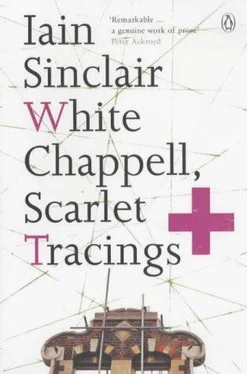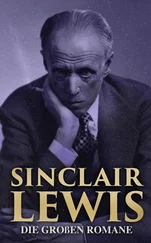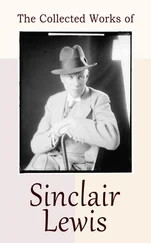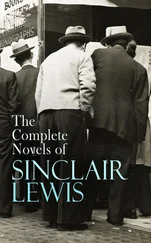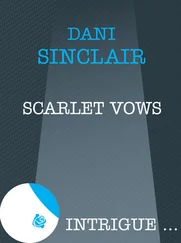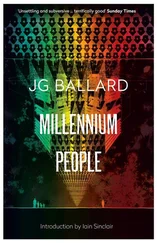Now the church has gone, the village street, the pub itself. Painted out in a sudden snowfall. Wind from the steppes decodes the stone, hoods the vicious impact of time. It is shifting, uncertain: dangerous.
I have an appointment in Ipswich and I will not abandon it.
The lanes close on me; skidding, wheel spin, not my decision.
The short journey stretches as the light dies. No other traffic on this back road. The sky has fallen into the fields.
The car fails. Unable to climb. The tracks away to the side are walled with drifts. Where I am is nowhere and I have been brought to it, beyond choice. I walk to the top of the hill in leaking shoes, unprepared. Risk insinuates, absorbing the warmth of the known.
A road sign: I beat off the snow, Ramsey. This is truly nowhere and I have arrived.
And again, driving in; the sign remains, but the road is never the same. No pretence at bookdealing; I am here simply to be here. And, of course, it is right, it is Michaelmas, the Rector seems to be waiting in the church porch. It is their special festival, feast of St Michael.
This man is both clown and messenger. In his long black skirts he crows around me, on all sides at once, showing off what he has assembled: photographs, lists, old books, cushions, old anything, extensions of his unfocused enthusiasm.
He produces Fred Kempster, the Essex Giant, shaking hands with a woman at an upstairs window of the Bell. The Gull family tree is bannered across the north wall. He shows me the Gull window, fired by the setting sun. St Luke, St John, and Christ, together with what he calls ‘healing episodes from the gospels’. Rituals of obscure transformation.
But he will not allow me to look; always at my elbow, interpreting everything that I am not interested in. I must return. Tomorrow. The exhibition will be opened to the public, fully hung. He points out the stone carvings on the arches and around the pillars; fruits of the earth, acorns, poisoned berries and bunches of grapes.
I have to stay overnight, to willingly enter the fictions of M. R. James. There is a room at the Bell. Low-ceilinged, windows opening onto the graveyard. Out over the leaning tombstones, the moss and ivy, to the burial place of the Gulls.
‘What doth the Lord require of thee, but to do justly, and to love mercy, and to walk humbly with thy God?’
Not a question, but a statement. Long shadows enlarge the monuments. Narrow the fear into my camera; I sit at the window, letting it come to me through the safety of the lens. The beams of the room creak like a whaler, pipes whistle, the light decays but remains benevolent; it is lived through.
The church exhibition will not be open until eleven o’clock and so I decide to walk out of Thorpe to try and discover the Gull family cottage at Landermere Quay.
A heavy sea-fret walks with me, liquid voices. A heightened perception of the trivial throws up from the roadside such named dwellings as ‘Golden Dawn’ and ‘Wolverine Cottages’. But these are soon left behind. There is nothing to guide me but instinct.
Thorpe Lodge is shapeless, soft, gone back. A road turns away for Kirby-le-Soken. I pass it. Cattle in the sea, snorting and stamping, unseen. The sea has rolled over these flat lands: walk under.
Another track, and I do break from the road. A farm building; I turn again. Over a stile and out among the fields. Wet branches soak me as I brush against them. Beaded veils. Glistening webs on the oak. It stops me. I take out the camera and wipe the lens. But this is not the photograph. The field below. There is the foreshortened outline of something like an upturned shed. I move down towards it, slithering on the mud slope. It is the shell of a great barge. Burnt out, charred, flaking; beams broken and twisted, grounded. In this drowned field, where water runs out, at this boundary, on the edge of things, between past and future. A spar goes down into the black silt, umbilical, connecting the hulk to this place. It is split, it is half of something.
I recognise it. And know that I have to write my way back towards this moment. This is given. To release my wife from her dreams of minatory buildings, a wind-invaded house, long corridors of strangers: I will return with my family; and my children will climb up onto the wreck, will stand at that rudder. And the connection will be made, the circuit completed.
White Chappell, Scarlet Tracings closes the triad begun with Lud Heat (1975) and Suicide Bridge (1979): it opens, hopefully, a second triad.
The letter from Douglas Oliver was written in response to Suicide Bridge and is published here with his permission.
Sub-texts have been cannibalised from many sources; some are obvious, some obscure. This is not the place to list them.
The contemporary characters represented in this book are, of course, fictional; though invented more by themselves than by the supposed author.
The Victorian characters lived under the names that I have given them: their behaviour is dictated by sources other than historical record.
